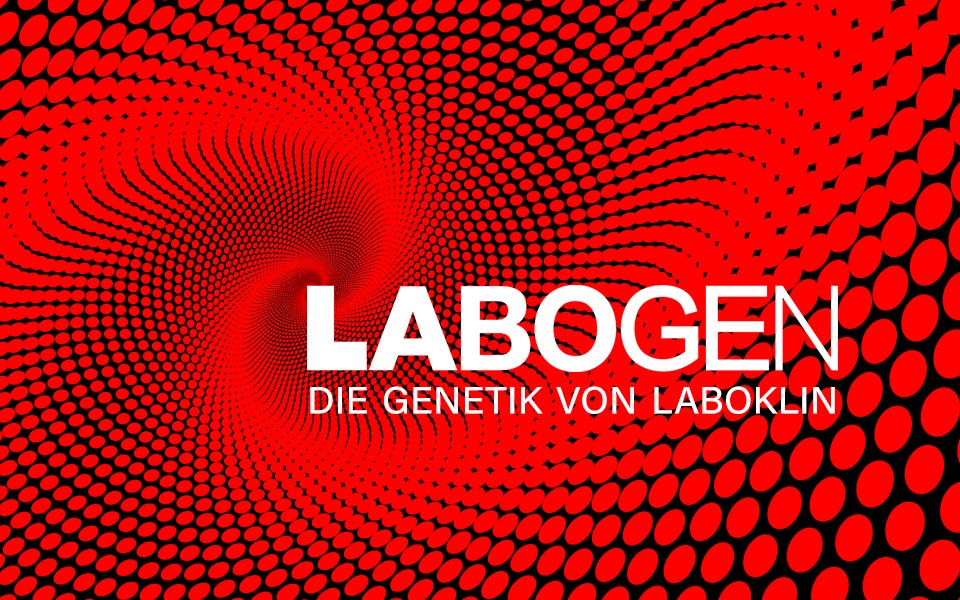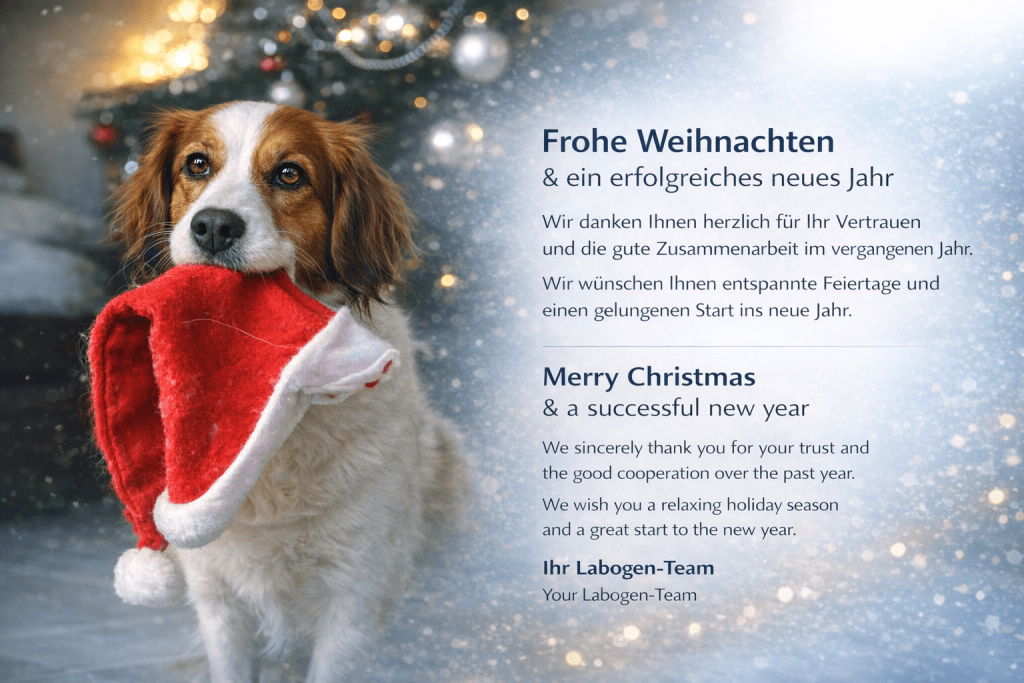Genetic diversity – DOG
- Home
- Genetic diversity – DOG
LABOGEN DIVERSITY CHECK
The avoidance of inbreeding plays an important role in responsible dog breeding. Genetic diversity reflects the degree of inbreeding in a population or breed. If inbreeding is avoided over generations, this is reflected in a high degree of genetic diversity. However, the risk of inbreeding is particularly high in the breeding of pedigree dogs, e.g. due to closed stud books and excessive mating of “popular sires“. This is associated with a loss of genetic diversity and inbreeding depression, i.e. the spread of harmful and pathogenic genetic variants.
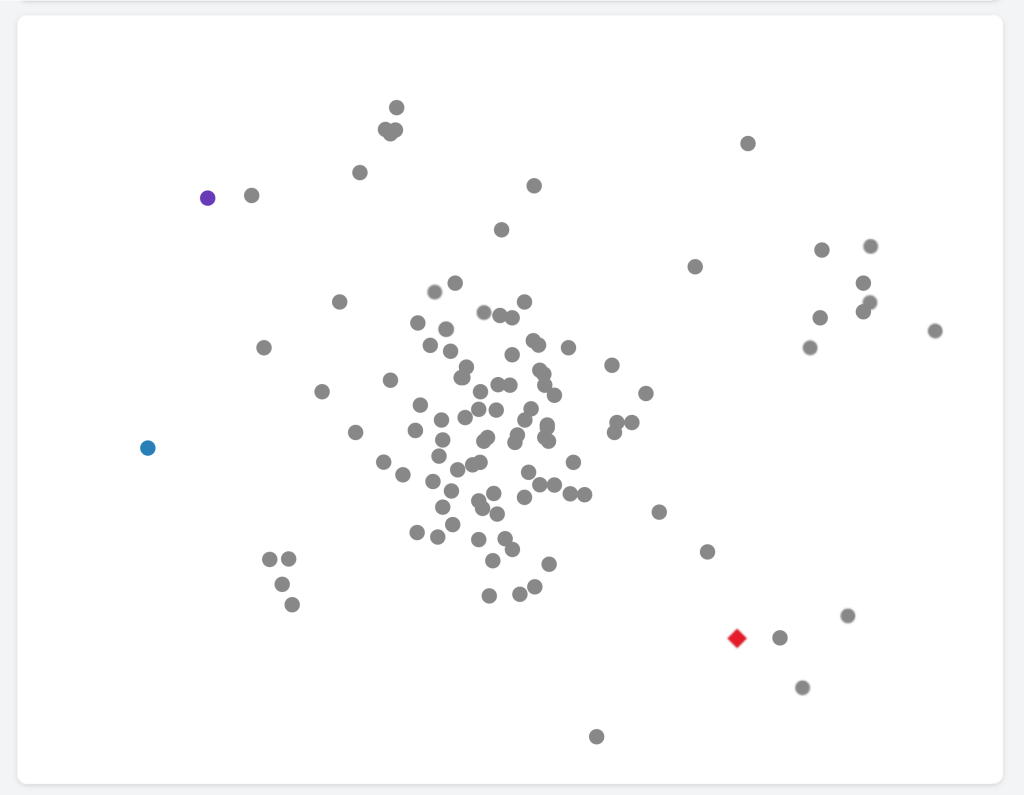
Health effects such as reduced immunocompetence or low reproductive success can also be signs of inbreeding depression.
The LABOGEN Diversity Check shows you the genetic relationship of animals of your breed and you can identify genetically less related animals. In breeds with very low genetic diversity, inbreeding can also occur among unrelated animals due to genetic uniformity within the breed. The LABOGEN Diversity Check helps to find suitable breeding partners and avoid inbreeding.
In addition, we always show you the latest distribution of heterozygosity in the breed or club population. This is another feature that can help maintain a healthy population.
The heterozygosity value indicates the genetic variability of the individual animal. Each individual inherits half of the genes from the mother and half from the father, and the less genetically related the parents are, the more heterozygous of the offspring can be.
With the LABOGEN Diversity Check, we support you in maintaining and increasing genetic diversity in the long term and sustainably promote the health of future generations. Simply order the Premium SNP DNA Profile from LABOKLIN and get free access to the LABOGEN Diversity Check for your dog.
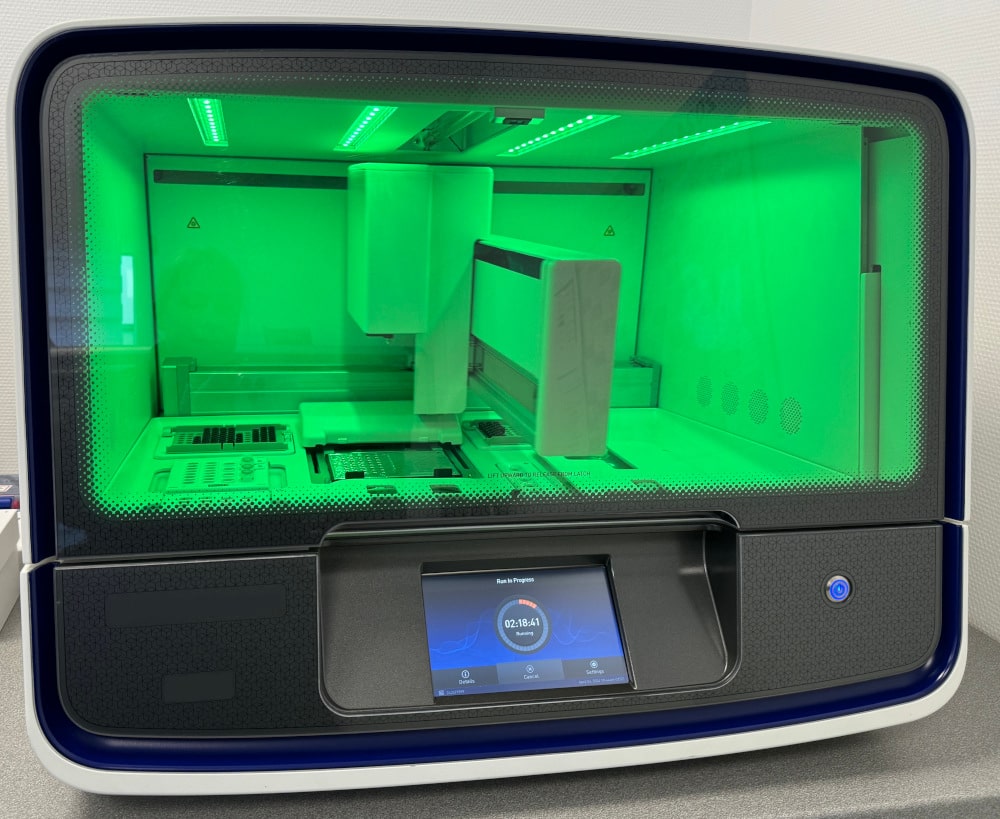
FAQs
Genetic diversity reflects the degree of inbreeding of a breed. The lower the genetic diversity, the more closely the animals of a breed are genetically related to each other. The risk of inbreeding and low genetic diversity is increased by closed studbooks and small breeding populations. This is associated with negative effects such as inbreeding depression and the spread of harmful and pathogenic genetic variants. Preserving and increasing genetic diversity will ensure the long-term health of future generations.
We calculate genetic diversity with the help of single nucleotide polymorphisms (SNPs). We use the 230 SNPs of your dog's genetic fingerprint (Premium SNP DNA profile) together with hundreds of other SNPs to calculate how similar the animals of a breed or club are genetically. The genetic distance between the animals is displayed graphically using a PCoA (Principal Coordinate Analysis).
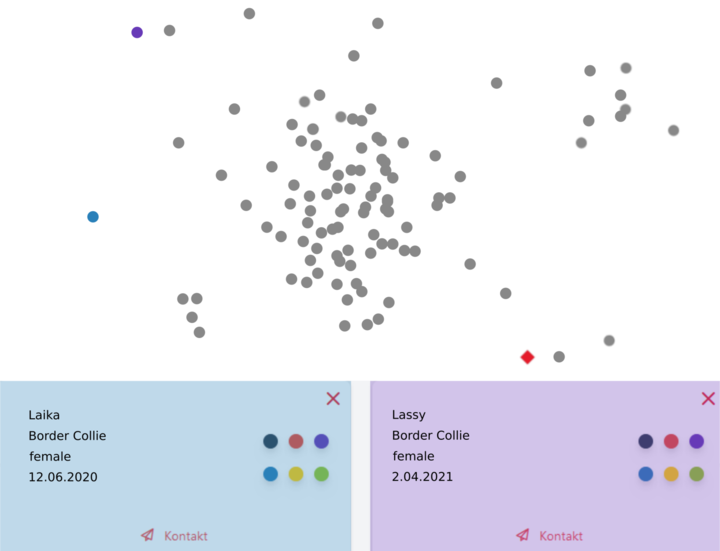
In the genetic diversity graph you can see the genetic relationship of your own animal (red square) to other animals (dots) of its breed or club. Each point corresponds to a dog. The closer dogs are to each other in the graph, the more genetically similar they are. The more animals that are activated for the display in the graph, the more complete, useful and meaningful the graph becomes. If the owners agree, you can select individual items to see the animal's name, breed, sex and date of birth to help you find potential breeding partners. If you already have candidates for breeding, the LABOGEN Diversity Check can show you how closely they are genetically related to your own animal. You can contact each other by email to express your interest. Perhaps you will find littermates or other close relatives of your pet and arrange to go for a walk!
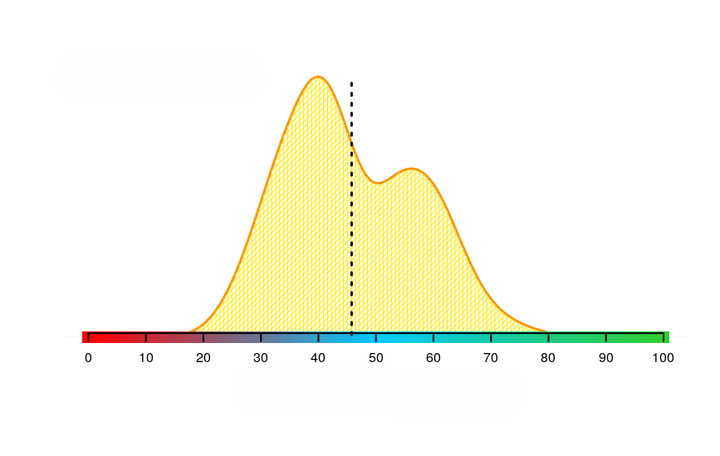 Heterozygosity describes the percentage of genetic traits (SNPs) in which your dog has inherited different variants from the mother and father. According to current scientific knowledge, animals with high heterozygosity are less affected by inbreeding than animals with low heterozygosity. To calculate heterozygosity, we use the genetic fingerprint (the Premium SNP DNA profile) and hundreds of other genetic traits in your dog's DNA. Your dog is marked in the graphic with a cross and a black solid line. As soon as a sufficiently large reference population of your breed has been examined at LABOKLIN, you will see the genetic variability of the entire breed population as an orange shaded area. The mean value of the breed is marked as a grey dotted line. Small population sizes and inbreeding can reduce the heterozygosity of a breed. Animals with high heterozygosity in breed comparison can therefore help to maintain the genetic diversity in breeding. Please note, however, that heterozygosity cannot be used to draw conclusions about individual factors such as hereditary diseases or external characteristics such as coat color. The preservation of genetic variability can be a building block in responsible dog breeding, but must not be considered in isolation.
Heterozygosity describes the percentage of genetic traits (SNPs) in which your dog has inherited different variants from the mother and father. According to current scientific knowledge, animals with high heterozygosity are less affected by inbreeding than animals with low heterozygosity. To calculate heterozygosity, we use the genetic fingerprint (the Premium SNP DNA profile) and hundreds of other genetic traits in your dog's DNA. Your dog is marked in the graphic with a cross and a black solid line. As soon as a sufficiently large reference population of your breed has been examined at LABOKLIN, you will see the genetic variability of the entire breed population as an orange shaded area. The mean value of the breed is marked as a grey dotted line. Small population sizes and inbreeding can reduce the heterozygosity of a breed. Animals with high heterozygosity in breed comparison can therefore help to maintain the genetic diversity in breeding. Please note, however, that heterozygosity cannot be used to draw conclusions about individual factors such as hereditary diseases or external characteristics such as coat color. The preservation of genetic variability can be a building block in responsible dog breeding, but must not be considered in isolation. We use several hundred single nucleotide polymorphisms (SNPs), including the 230 SNPs of your dog's genetic fingerprint (Premium SNP DNA profile). Each SNP is checked to see whether it is homozygous or heterozygous. A SNP is homozygous if your dog has inherited the same nucleotide (building block of DNA) for this SNP from both mother and father. A SNP is heterozygous if your dog has inherited different characteristics for this SNP from the mother and father. We calculate the percentage of all SNPs for which your dog is heterozygous. This value is the heterozygosity.
You can compare the heterozygosity values of several dogs of your breed. All dogs require the Premium SNP DNA profile from LABOKLIN. According to current scientific knowledge, animals with high heterozygosity are less affected by inbreeding than animals with low heterozygosity. However, heterozygosity should not be overestimated in breeding. Breeding decisions should be made primarily on the basis of the problematic hereditary diseases in the breed. It may then be advantageous to include the conservation of genetic diversity in the breeding decision.
The numbers below the graph show the range in which the heterozygosity of your animal can be found. Percentages from 0% to 60% are given. Theoretically, values of up to 100% could also be conceivable. However, values above 60% are so unlikely that we can end the graph at this value. If your animal actually has more than 60% heterozygosity, you can see this as a number in the box at the top right.
You will receive an activation code when you order a Premium SNP DNA profile (ISAG 2020). It is used to display the LABOGEN Diversity Check online at diversity.labogen.com. Please log in here first with your data from the LABOGEN webshop(store.labogen.com). If you have not yet created an account with us, you can register at store.labogen.com/account. After logging in, you can create your findings by entering the activation code in the LABOGEN Diversity Check.
LABOKLIN offers to analyze animals from breeding clubs separately. This means that the animals of your own club can be displayed independently of other entries of the same breed. Interested clubs are welcome to contact us at any time to set up such a service(labogen.com/contacts).
LABOKLIN offers to keep and analyze animals of a breeding club in its own database. An official breeding club account in the Diversity Check automatically includes all the animals in the club and allows the heterozygosity and genetic diversity of the club animals to be evaluated long term. Interested clubs are welcome to contact us at any time to set up such a service.
If you order a Premium SNP DNA profile for your dog from LABOKLIN, we will calculate the heterozygosity of your animal free of charge and your animal will be included in the calculation of genetic diversity. You can view the results in the LABOGEN Diversity Check.
We strongly recommend sending in an EDTA blood sample for the Premium SNP DNA profile. An alternative is a special swab (eNAT). Due to the lower amount of DNA in cheek swabs, it is more difficult to carry out the test, which can lead to a higher failure rate in some cases.
The regular test duration is 14-21 working days.


